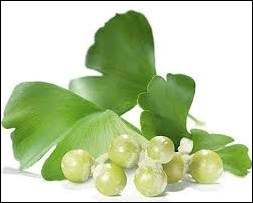It is interesting to think of growing something that has been around for 150 million years. I can’t even begin to imagine what a time frame of that nature actually means. The fossil tree better known as the ginkgo (Ginkgo biloba) or maidenhair tree is a survivor from ancient times. In fact, 150 million years ago, huge forests of ginkgo covered a good part of North America and Asia. Ginkgo was native to southeast China, but became extinct centuries ago. The only ginkgos to survive were those enclosed in gardens within the temple walls where they were grown for their edible seeds. Now, the ginkgo is a prized addition to the landscape in many parts of the world growing upwards of 30 million and spreading. In our local landscapes the ginkgo will survive but will not likely ever become a towering tree.
The leaves on a ginkgo are perhaps one of the most interesting characteristics. Growing a tree with such a unique leaf shape is for sure a draw to cultivate this tree. They are distinctive lovely fan shape and grow to about three inches in size. The name biloba obviously is a descriptive word that describes the leaf itself as the centre of the fan-shaped leaf is notched dividing the leaf into two lobes. The veins in the leaf radiate out from the petiole or leaf stem. What a perfectly lovely leaf!
The ginkgo is a dioecious tree meaning that male and female parts are contained on different trees. The male trees have drooping catkins while the female trees have drooping flowers. Both trees will flower in March/April dependent upon the climate in which they are growing. It is preferable to grow the male trees as the female fruit that appears in autumn is very smelly! The fruit ferments creating quantities of butyric acid, which is reminiscent of smelly old billy goats! In spite of the terrible smell, the fruit is consumed in Asia and commonly referred to as Japanese Silver Apricots.
If you are growing a ginkgo tree and have no idea the gender, then it is advisable to plant it far away from other ginkgos in order to avoid the very smelly fruit. They do take a long time to grow from seed but they really are a lovely landscape specimen. They flutter beautifully in a breeze bringing a lovely sound to your garden you will be sure to enjoy.
The ginkgo is also very tolerant to a host of rather adverse conditions. They grow beautifully in soils with salt, pH and even in highly polluted areas. They are deep-rooted and are fabulous when used not on the beach but definitely close to it as salt spray does not affect them. They are not tolerant to soggy soil conditions. They are what you might call the ideal tree as they are considered hardy from Zone 3 to 8, require very little maintenance, and are not susceptible to many pest or disease problems.
To grow an attractive tree, prune it early to encourage one central leader. This will ensure a beautiful landscape specimen in the future.
The seeds are available for purchase in shops specializing in Asian food. They are actually quite tasty. Extracts are made from the seeds that are utilized to help with a host of medical conditions including senility, poor circulation and to enhance mental performance.
So, perhaps you gardeners who strive to grow something different might like to try growing the fossil tree in your garden and trip back to the time of the dinosaurs!
This column is specially written for a current student at SSH from Newfoundland. He is from Newfoundland and is crazy about growing everything he can including the "Fossil Tree."
Hanbidge is a horticulturist with the Saskatoon School of Horticulture and can be reached at 306-931-GROW(4769); by email at growyourfuture@gmail.com or check out our website at www.saskhort.com
Enrol now for distance courses leading to a diploma or a certificate. Study with us or study in the comfort of your own home! Please contact us for further information or visit our website at www.saskhort.com.
Let our team of experts help you to create the outdoor living area of your dreams. Our team of educated and skilled experts can build or renovate your new or existing landscape. Including decks; gazebos; sunrooms; solariums; retaining walls; fences; irrigations systems; and regular maintenance.
PMG classes (open to everyone) have begun. Please go to www.saskhort.com and click on the PMG tab for more information. Cost is $25 for members and $35 for non-members. Note that registration and payment must be received prior to one week before the class.



